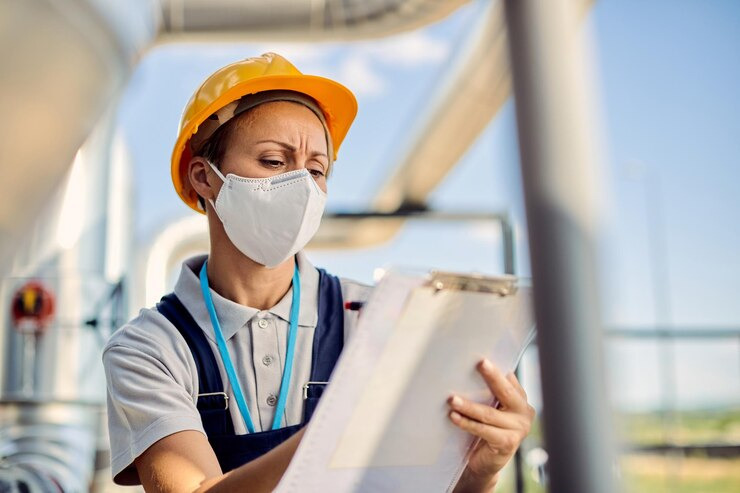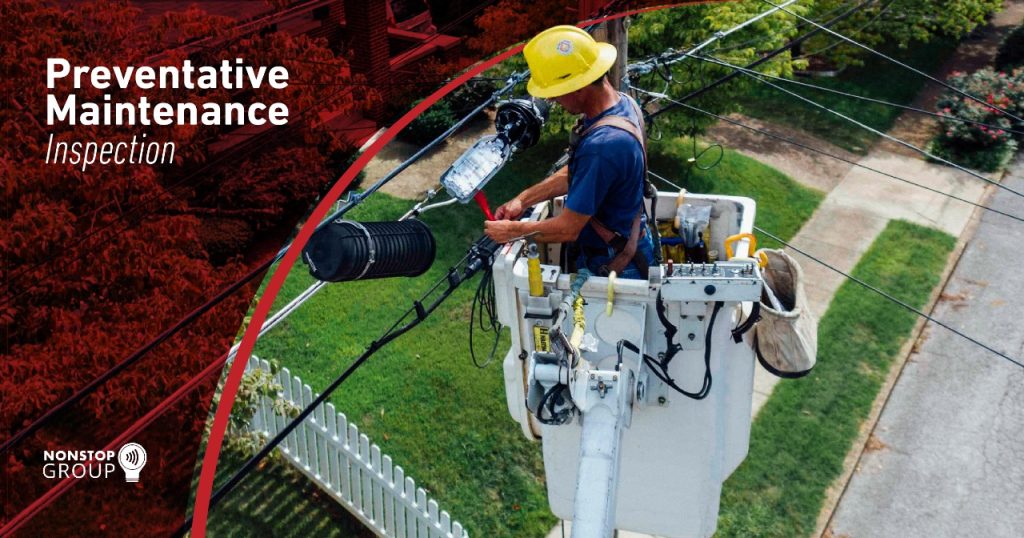6 Min Read

Preventative maintenance inspection (PMI) is integral to your company’s Preventive Maintenance program. In diagnosing potential issues, subsiding equipment breakdowns, reducing costly repairs, minimizing accidents, and firefighting asset downtime, PMIs prove to be a low-cost and high-reward practice.
In fact, studies suggest that companies with a PM plan highly focused on preventative maintenance inspections can boost their operational efficacy significantly. However, conducting successful maintenance inspections requires facility managers to consider several aspects; What does a thorough inspection entail? How critical is PMI to your business? What are the essentials of a preventative maintenance inspection program? What is the ideal PMI frequency for your organization?
Answers to all these perplexing questions will help you devise a successful PMI strategy. Let’s start.
What Is Preventive Maintenance Inspection?
Preventive Maintenance Inspection, shortly known as PMI, is a systematic process of evaluating the equipment’s current condition to pinpoint the impending performance deficiencies and hints of degradation. The ultimate goal is to prevent the equipment and assets from breaking down and keep them running at maximum efficiency all year round.
All the bounded and critical assets, including electrical system, compressed air lines, access panels, air intake, and safety equipment are scrupulously inspected for proper operation. Based on this health checkup, facility inspectors provide scope for maintenance, identify the areas for improvement and utilize this intel for recommending necessary maintenance. Timely scheduled preventative maintenance inspection also determines the tools, materials, and labor needed to perform maintenance work and keep the equipment in good working condition.
Why Are Preventive Maintenance Inspections Important For Your Organization?

Meticulously conducted inspection is the first step in making any preventive maintenance plan successful. Facility managers inspect the equipment, suggest suitable maintenance work, and alter the current maintenance schedule for the inspected equipment. Mostly asset-intensive organizations deploy a CMMS or EAM solution to support their inspections and the preventive maintenance strategy.
Key Benefits of Preventive Maintenance Inspections:
Facility managers can take advantage of the principles of preventive maintenance inspection to unlock various benefits.
- Preventive maintenance inspections microstudy the equipment condition and performance to detect potential problems and schedule preventive maintenance timely.
- Performing preventive inspections minimizes the risk of asset downtime, failures, and accidents, reducing maintenance and repair costs.
- Preventive maintenance inspection enhances the efficiency of your organization’s maintenance planning efforts.
- Careful inspections help your organization devise a strategic POA (Plan of Action) for preventive maintenance tasks and activities.
- Through preventive inspections, facility managers ensure the assets are not undermaintained towards their end-of-life period.
- The data gathered by the maintenance inspectors dictates the required material, labor, and other resources necessary to perform the preventative maintenance.
- Routine inspections ensure that your organization’s critical assets remain operational at the optimal level.
- PMI, through the guided maintenance work, increases the asset reliability and extends the lifespan of the equipment and facilities.
In a nutshell, every asset-intensive organization should schedule regular inspections of their critical assets to stimulate productivity and apply preventive maintenance duly.
Smarter Asset Tracking With NFC Tags
Learn more about how NonStop Suite's NFC Asset Tracking Solution can help your Enterprise streamline operations to new heights.
Get A Free Product Tour
What Are The Essentials of a Preventive Maintenance Program?
Preventive maintenance inspection solely focuses on “Inspection” as part of the preventive maintenance program. Facility managers carry out rigorous inspections to analyze the condition of your organization’s critical assets. The data collected from these inspections is used to guide the necessary preventive maintenance work. However, an organization can make Preventive Maintenance Inspections successful only if they are well prepared with a holistic and strategic preventive maintenance inspection workflow.
To ensure uninterrupted, undelayed, and facilitated maintenance inspections, adhere to these expert guidelines:
- An inspection toolkit equipped with all the essential tools, including an industrial stethoscope, torch, infrared thermometer, mirrors, stroboscope, and vibration pen, should be readily available for timely inspections.
- The condition-monitoring routes must cover all necessary inspections.
- The guards and other protective equipment should be removable to inspect belts, couplings, and chains.
- The oil containers, base bolts, and gauges must be clean and spill-free to streamline the inspection process.
- The maintenance inspectors and technicians must be well-trained.
3 Stellar Tips For Successful Preventive Maintenance Inspections
While the SOPs stated above lay the foundation for a successful inspection, they are insufficient to achieve optimum operational maintenance. Implement these three tips within your strategy to gain maximum value from PMI efforts:
1. Integrate a CMMS or EAM Solution for Preventive Maintenance Tasks
Deploying a CMMS or EAM solution is crucial for streamlining the path to achieving your maintenance goals. It simplifies, automates, organizes, and optimizes your organization’s preventive maintenance program, leading to optimal maintenance efficacy. As many as 58% of facilities rely on CMMS to manage, control, and evaluate their inspection and maintenance operations.
By employing the CMMS appropriately, facility managers can automate the process of collecting valuable inspection data and translating it into meaningful reports. This makes generating analytics on emerging breakdowns and equipment much more effortless.
Facility managers can also benefit from automated maintenance work order systems with minimum human errors. Consequently, the PMI planning, scheduling, and execution stage become much more straightforward and manageable.
Simply put, the benefits of CMMS software are intriguing. However, up to 80% of CMMS implementations fail due to these detrimental mistakes:
- Not considering users as part of the selection process.
- Implementing complex CMMS software.
- Hesitation to adopt modern technology.
To avoid these challenges, your organization must steer clear of the inadequate and unstrategic implementation of CMMS.
Pro Tip: Implement a modern, easy-to-use, and adaptable EAM system like The NonStop Suite to streamline preventive maintenance inspections and foster your PM program.
2. Create Preventive Maintenance Checklist
For successful PMIs, your organization must establish inspection checklists aligned with the facility’s maintenance objectives. Creating checklists partially induces standardization in the inspection process. Equipment details, inspection and maintenance schedules, SOPs (Standard Operating Procedures), and all other critical maintenance-related information is organized in a systematic order. Due to this process standardization, maintenance technicians become more efficient, saving your organization labor cost and time.
A recommended approach toward this documentation is to facilitate the process with an automated solution. Take the NonStop Suite’s dynamic e-forms, for instance. Using this advanced tool, your company’s facility managers can digitize the inspection checklists and other paperwork. Consequently, the inspection data becomes easy to record, maintain, access, share, and track throughout the preventive maintenance plan, resulting in higher-quality data.
Pro Tip: The NonStop Suite offers an automated, modern, and simplified solution for all your documentation needs. Bid farewell to the outdated, crumpled, coffee-stained, lost, or not turned-in paper forms and create PMI checklists via dynamic e-forms!
3. Bridge The Gap Between PMI & Corrective Maintenance With Automation
Asset-intensive companies often fail to dictate corrective maintenance tasks when they operate on a manual inspection and maintenance system. This lack of follow-through increases the risk related to worker safety and enforcement action. To cope with this challenge, your company would want to complete the necessary corrective actions on time, followed through to closure.
One way to ensure that is to automate the communication pillar between facility inspectors and corrective maintenance teams with inspection software. Consequently, your facility inspectors can trigger the required preventive maintenance activities automatically. The concerned maintenance technicians are also timely notified about the required tasks along with the relevant details in a unified system. Since the PMI process is shifted to an advanced, and accessible system, the facility manager can supervise the whole process, ensuring accountability for the maintenance team.
Pro Tip: Implement a modern, reliable, advanced inspection software like The NonStop Suite to support your company’s asset defect management process and to increase asset life cycles.
How Frequently Should Your Organization Schedule Preventive Maintenance Inspections?
Apparently, the PMI approach is relatively straightforward over a reactive approach. However, prior to an immediately obvious issue, deciding what to inspect, when to inspect, and how often it should get inspected can be confusing. Your organization’s facility managers can go both overboard and underboard with PMIs. To avoid this cumbersome situation, your company must create an ideal inspection frequency. Now determining inspection frequency requires careful study of the equipment Failure Developing Period.
The Failure Developing Period (FDP), also known as Pf Curve, is the duration from when the facility managers can detect a failure until it causes a breakdown. Here, failure is referred to as the signs of problems in a piece of equipment while it operates correctly. For instance, a manufacturing plant has visible signs of metal fatigue, corrosion, and general surface degradation but is still producing the required units. This situation is what we term “failure,” and the time difference between the equipment failure and breakdown is termed “FDP.”
Once the facility managers have the FDP sorted out, obtaining the ideal PMI frequency becomes as easy as dividing the FDP by 2. Taking the same manufacturing plant example, let’s say the maintenance inspectors reported the issues with the manufacturing plant at 5 am. The plant broke down at 5 pm 6 days later, giving us an FDP of 156 hours. As per the rule of thumb, we’ll divide this FDP by 2, giving us an inspection frequency of 78 days.
Conclusion: Inspections Made Easy With The NonStop Suite!
Preventative maintenance inspection enables your organization to unleash opportunities for improvement and embrace preventive maintenance in its operations. However, it’s a tedious process that requires a carefully devised strategy and advanced inspection tools. To streamline your company’s PMI workflow, partner with the NonStop Suite!
The NonStop Suite is a comprehensive package of smart solutions for all your company’s maintenance needs. Features like dynamic e-forms, On-The-Go Asset Management, NFC asset tagging system, GxP & ISO Compliance, and NC-CAPA Capabilities amplifies the performance of your organization’s maintenance crew. Every PMI-related task, including documentation, checklist creation, metrics & analytics generation, maintenance work order processing, facility inspection, and corrective action reporting, becomes hassle-free, swift, and mobilized.
If you want to unlock these advantages for your company while inducing automation into your PM strategy, consult with the NonStop Group today or book a free product tour


